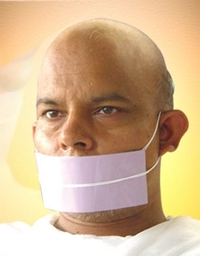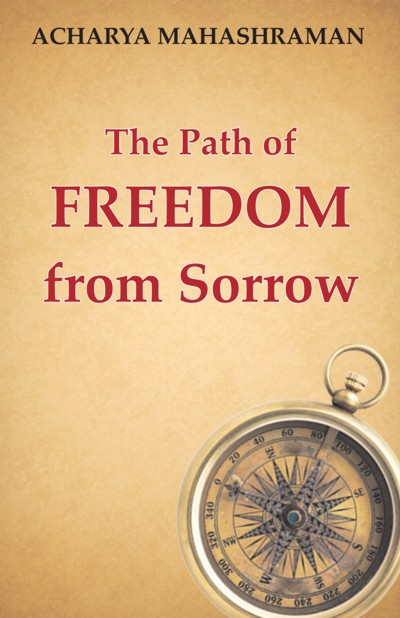The Jain Agam says that man enjoys the material objects and uses them. To fulfil the need of body he eats food, wears dresses and does many more activities. If we say in one sentence, it can be said that material objects are necessity of our life. In other words, our life is dependent upon material objects. No one can live without material objects.
Jain philosophy details six categories of substance. One of them is called pudgalastikaya (Matter). This Matter is used by living beings at each moment. Living beings need Matter to speak and to think as well and it is essential for them for every activity small or big. Living beings have to live in the world of matter.
The point of analysis is how can a person, living in this material world, secure his consciousness from becoming distorted? How can he keep the consciousness purified? In this context the agam states clearly:
Na kambhoga samayam uventi, na yavi bhoga vigaint uventi Je tappaosi ya pariggahi ya, so tesu moha vigaim uvei.
Essentially, material objects and sensorial or sensual urges can never bring equanimity. Similarly, Material objects do not possess potentiality to deteriorate our consciousness and emotions. The root cause of equanimity or deformity is absence or presence of attachment and aversion respectively.
The one who has attachment or hatred for objects and urges deludes his consciousness. On the other hand, the person who unaffected by material objects and sensual desires is stable in equanimity. A man can stay equanimous if he is emotionally pure, mere observer, and an unbiased knower in spite of consuming objects. If thoughts of a person are biased by likes and dislikes, there is absence of pure observation or perception. Such person is unable to relinquish objects and is never able to attain a state of non-equanimity and thus has a distorted consciousness.
Even during the consumption of material objects, attachment and attraction for the objects should not exist. Attraction should be towards inner world and the soul. This is an important maxim of spiritual practice. Sanskrit verse describes the same as:
Ya pritiravivekanam, vishayesvannupayini Tvamanusmaratah sa me, vishayan mapasarpatu
This is translated as - the allure towards material objects, if directed to parmatma (supreme-soul) leads to an accomplished and successful spiritual practice.
Parmatma is not different from atma. The pure state of atma is parmatma. From this perspective worship of atma means worship of parmatma:
Yah parmatma sa evaham, yoham parmastatah Ahameva mayopasyo nanyah kaschiditi sthiti
'What is Parmatma' is me. 'What I am' is parmatma. Therefore, I have to worship myself. It is also said while practicing Preksha Meditation "sampikkhae appagamappaenam"- see yourself through yourself. This process of self-realisation is in fact the process of realisation of the supreme self (parmatma).
No spiritual practice is more superior to the practice of becoming free from attachment and aversion. In fact, the primary purpose of sadhana is to be liberated from attachment and aversion and to become veetarag (completely detached). The one, who attains veetarag, has achieved everything. This is the biggest achievement of his life. Nothing else is left for him to achieve. Thus the process of self-realisation involves the practice of realizing the true self or the supreme self, free from likes (rag) and dislikes (dvesh).
How can a soul move in the direction of veetaragta? It is suggested that through spiritual practice and feeling of detachment (vairagya) one can progress in the direction of veetaragta or freedom from attachment and aversion. Man should become aware of each and every moment of his life. He should self-introspect time and again. Suppose someone converses with a person for an hour. After that he should analyse deeply that during conversation did he get any negative thought? If yes, then how many times and in what context? In this way, on one hand there should be self-analysis or introspection and on the other hand the conscious effort of being veetarag should go on. It can make us free from attachment and aversion to some extent. And eventually, in future it can lead to the state of complete detachment (veetragta).
Purity of emotions is significant in the practice of veetaragta. From one viewpoint emotions are everything. If emotions are pure, everything is fine. But if the emotions are impure everything goes erroneous. It brings loss in place of gain. Impure emotions cause bondage of inauspicious karma. Conversely, pure thoughts will lead to bondage of auspicious karma and destruction of accumulated bad karma.
Now the question is that how can purity of emotions be possible? There are many means and ways. But the first important thing is to decide the goal. Any process works after goal-setting. Swadhyay is an important means for purity of emotions.
Prayaschitta is also a way to purify the emotions. We can name it as therapy too. As the medical treatment does not hurt but heals the patient. Similarly, Prayaschitta also cleans the attachment and aversion and its by-products. Prayaschitta is a type of tap (penance) in Jainism. It needs capability. In Jain Agam Thanam, we find the qualifying parameters for a person who can do Prayaschitta. A person, who belongs to a virtuous class, is humble, endorsed with right knowledge, faith and conduct, forgiving, has self-control and is free from deceit, is qualified for Prayaschitta (expiation).
A practitioner should understand that if he accepts his mistakes genuinely, then only improvement or transformation is possible. If due to ignorance or arrogance a person does not admit his faults or does not even realize then how can the cleansing of mind and purification of emotions be possible. Therefore, for Prayaschitta, during confession one must be honest like a child.
Preksha Meditation is a great technique of sadhana. It includes many exercises. If person understands and regularly practices at least few of them then he can step forward in the direction of emotional purification. The Arham sound is a very simple exercise to purify emotions. The practice of Dirghshvas (long breath) on one hand purifies the emotions and on the other hand maintains the health. Kayotsarg (relaxation) is also very significant. The practice of relaxation not only releases the stress but very genuinely purifies the emotions also. There are many more practices in this series. Though practically, a person cannot practice all the exercises but of course some of them can be done. If a person after comprehending correctly practices few exercises regularly with complete dedication, then he can progress towards emotional purity.
 Acharya Mahashraman
Acharya Mahashraman
